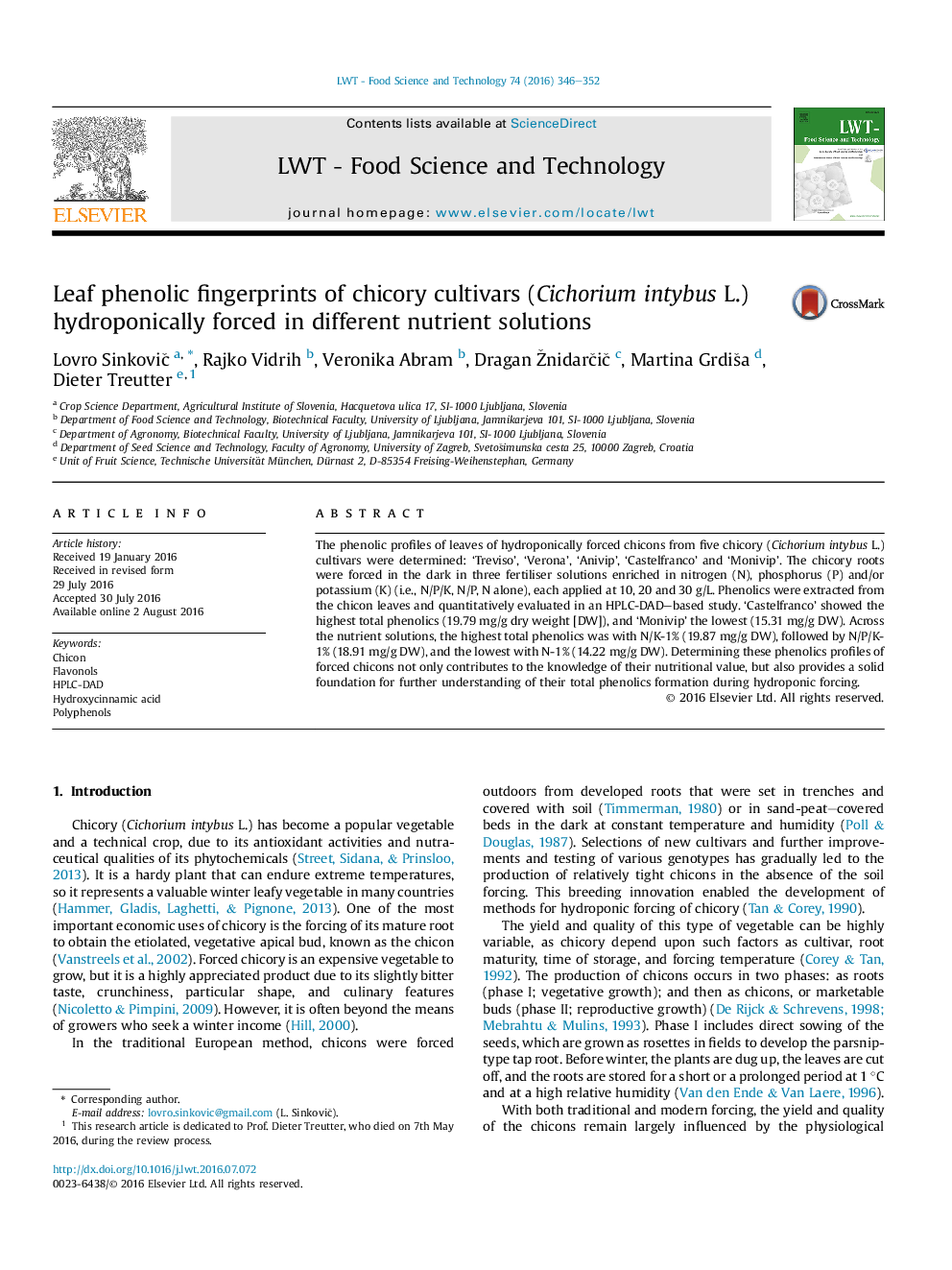| Article ID | Journal | Published Year | Pages | File Type |
|---|---|---|---|---|
| 4563469 | LWT - Food Science and Technology | 2016 | 7 Pages |
•Under different nutrients, 44 phenolics were extracted from five chicons cultivars.•The phenolics varied widely among analysed hydroponically forced chicons.•Twelve phenolics were specifically identified using HPLC-DAD metabolomics.•Chicons phenolics profiles are influenced by cultivar and forcing nutrient solution.•The remaining grouped unknown phenolic compounds are the predominant phenolics.
The phenolic profiles of leaves of hydroponically forced chicons from five chicory (Cichorium intybus L.) cultivars were determined: ‘Treviso’, ‘Verona’, ‘Anivip’, ‘Castelfranco’ and ‘Monivip’. The chicory roots were forced in the dark in three fertiliser solutions enriched in nitrogen (N), phosphorus (P) and/or potassium (K) (i.e., N/P/K, N/P, N alone), each applied at 10, 20 and 30 g/L. Phenolics were extracted from the chicon leaves and quantitatively evaluated in an HPLC-DAD–based study. ‘Castelfranco’ showed the highest total phenolics (19.79 mg/g dry weight [DW]), and ‘Monivip’ the lowest (15.31 mg/g DW). Across the nutrient solutions, the highest total phenolics was with N/K-1% (19.87 mg/g DW), followed by N/P/K-1% (18.91 mg/g DW), and the lowest with N-1% (14.22 mg/g DW). Determining these phenolics profiles of forced chicons not only contributes to the knowledge of their nutritional value, but also provides a solid foundation for further understanding of their total phenolics formation during hydroponic forcing.
